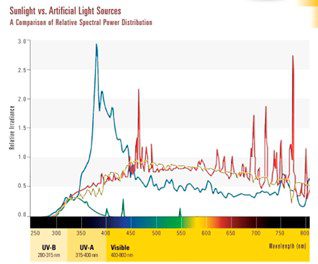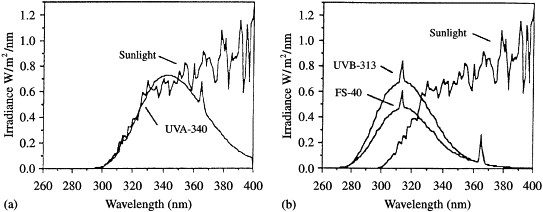Q: What is the best (and cheapest) way to measure weatherability? QUV, Xenon Arc, or Solarbox? I want to get machine for my laboratory.
A: The very best way to ascertain resistance to outdoor conditions is natural exposure (this is expensive and takes years). The second-best weathering simulation technique is exposure to concentrated sunlight through the use of solar reflectors and water mist, commonly known as EMMAQUA or equatorial mount with mirrors for acceleration and water (ASTM D4141).
This technique utilizes real solar energy, but the duration is significantly reduced because the energy is concentrated by mirrors. ASTM D4141 testing requires the careful measurement of UV light exposed to. The amount measured is then compared to historical data of Florida exposure and correlated to the number of months of typical exposure. This is also very expensive.
The next-best technique involves the use of a xenon arc weatherometer (ASTM D6695). For artificial tests, the wavelengths of xenon arc emission best simulate sunlight. These cabinets are relatively expensive to buy and costly to operate.

(Source: Atlas Material Testing Technology)
Next in relevance is QUV (ASTM D4587). This is tried and true but not as representative of sunlight as the other tests. I would use 340-A lamps, as the shorter wavelengths (UVB-313) are selectively too damaging to polyester resin molecular backbones. QUV cabinets are much less expensive than xenon arc units.

(Source: Q-Lab Corp.)
You may want to consider building a rack and exposing test panels at your own facility as well.
